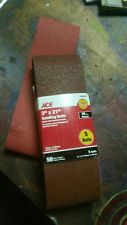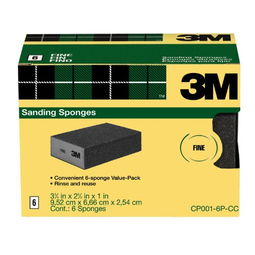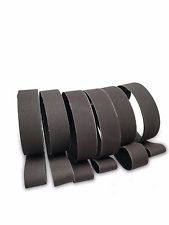Sanding Grit Progression: A Comprehensive Guide
When it comes to sanding, the choice of grit size is crucial. It determines the smoothness and finish of your workpiece. Understanding the sanding grit progression is essential for achieving professional results. In this article, we will delve into the different grit sizes, their uses, and how to progress through them effectively.
Understanding Grit Sizes

Grit sizes are measured using a number system, with lower numbers indicating coarser grits and higher numbers indicating finer grits. For instance, a 60-grit sandpaper is coarser than a 120-grit sandpaper. The grit size affects the coarseness of the sandpaper, which in turn affects the amount of material removed and the finish of the workpiece.
| Grit Size | Description | Use |
|---|---|---|
| 60-80 | Coarse | Removing material, preparing surfaces for painting or varnishing |
| 100-120 | Medium | Smoothing surfaces, removing minor imperfections |
| 150-180 | Fine | Finishing surfaces, achieving a smooth finish |
| 220-320 | Very Fine | Finishing surfaces, achieving a high-quality finish |
| 400-600 | Super Fine | Finishing surfaces, achieving a mirror-like finish |
As you can see from the table, the grit size increases as the sandpaper becomes finer. This progression is essential for achieving a smooth and professional finish on your workpiece.
Progressing Through Grit Sizes

When sanding, it is important to progress through the grit sizes in a systematic manner. Starting with a coarse grit, such as 60 or 80, helps remove material and prepare the surface for painting or varnishing. Once the surface is smooth, you can move on to a finer grit, such as 100 or 120, to remove minor imperfections and achieve a smoother finish.
Continuing this progression, you can use grit sizes like 150, 180, 220, 320, and finally 400-600 to achieve a high-quality finish. It is important to note that the progression should be done in a consistent and systematic manner to ensure the best results.
Choosing the Right Grit Size for Your Project

Selecting the appropriate grit size for your project depends on several factors, including the type of material, the desired finish, and the amount of material to be removed. Here are some general guidelines to help you choose the right grit size:
-
Coarse grits (60-80): Ideal for removing material, preparing surfaces for painting or varnishing, and dealing with rough surfaces.
-
Medium grits (100-120): Suitable for smoothing surfaces, removing minor imperfections, and preparing for a finer finish.
-
Finer grits (150-180): Ideal for achieving a smooth finish, finishing surfaces, and preparing for a high-quality finish.
-
Very fine grits (220-320): Suitable for finishing surfaces, achieving a high-quality finish, and preparing for a mirror-like finish.
-
Super fine grits (400-600): Ideal for achieving a mirror-like finish, finishing surfaces, and preparing for a high-quality finish.
Remember that the choice of grit size may vary depending on the specific project and material. It is always a good idea to experiment with different grit sizes to find the best results for your project.
Conclusion
Understanding the sanding grit progression is essential for achieving professional results in your sanding projects. By progressing through the grit sizes systematically and choosing the right grit size for your project, you can achieve a smooth and high-quality finish. Remember to experiment with different grit sizes to find the best results for your specific needs.













